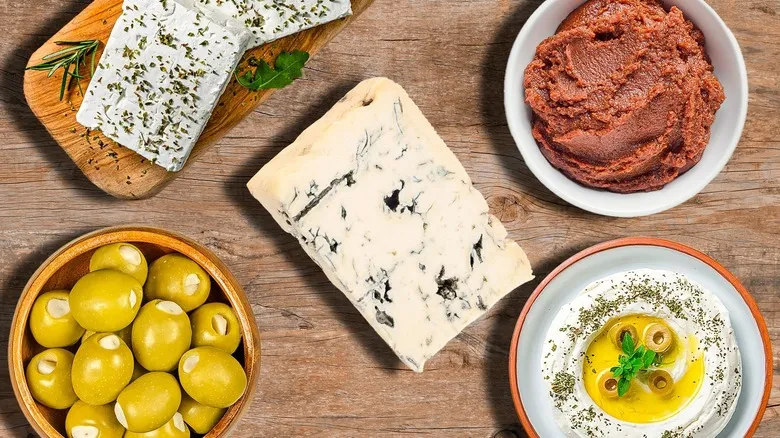1. Olives (for a non-dairy replacement)
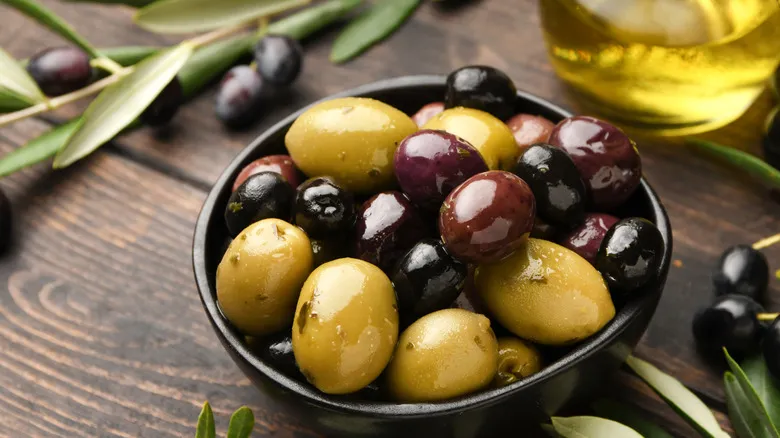
There are numerous reasons why olives are my top choice for a non-dairy alternative to blue cheese. To begin with, blue cheese and olives have long been a classic pairing, famously coming together in the well-known blue cheese stuffed olive created by a bartender years ago. Olives deliver a salty, briny taste that can mimic some of the boldness of blue cheese. They also provide a similar umami flavor and can be finely chopped to replicate the texture of crumbled blue cheese.
For a more gourmet touch, consider using specialty olives like Bloody Mary olives. Olives are especially effective as a blue cheese substitute in salads, pasta dishes, and as toppings for pizzas or flatbreads. Their robust flavor can enhance dishes without the need for dairy. And don’t forget about the brine — adding a splash to your salad dressing can elevate the blue cheese flavor even more!
2. Goat cheese and pepper

Next on our list of favorite substitutes for blue cheese is goat cheese blended with a generous amount of freshly cracked black pepper. For an adventurous twist, consider using the French-aged goat cheese with its characteristic moldy rind, known as chevre. This combination delivers a tangy, creamy foundation from the goat cheese that resembles the texture of a soft, rich blue cheese, while the pepper introduces a zesty kick that echoes the sharpness of the mold.
The goat cheese offers a comparable texture and spreadability, and its natural tartness enhances the heat of the pepper. You might even experiment by marinating your goat cheese in a variety of peppers, olive oil, and a hint of olive brine for an excellent blue cheese alternative. This pairing is fantastic in salads, on crackers, or as a spread for sandwiches. It also adds a delightful savory note to cornbread. Be sure to include this option on your cheese platter, especially alongside grapes or figs, just like you would with blue cheese!
3. Feta
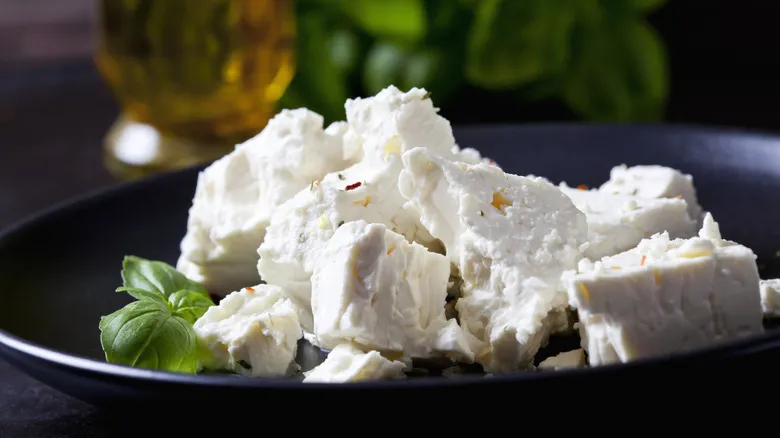
Feta cheese serves as an excellent alternative to blue cheese, boasting a similar crumbly texture and salty taste, but without the distinctive mold. Although it is milder in flavor, it still delivers a zesty kick that can effectively replace blue cheese in various dishes. Its briny essence enhances salads, complements fruits beautifully, and melts seamlessly in cooked recipes, making it a highly adaptable option.
Feta shines in sheet pan meals, elevating them to a restaurant-quality main course. It also excels in make-ahead breakfast options, infusing your morning routine with flavor and zest. Naturally, feta is fantastic as a dip, allowing you to enjoy more of it compared to a dip made solely from blue cheese. In this chorizo and chickpea salad, feta mimics blue cheese by contributing pungency, tang, and rich flavor to a hearty, meal-worthy salad. Best of all, its texture is suitable for both hot and cold dishes, making it a great addition to any cheese platter.
4. Furu (fermented bean curd)
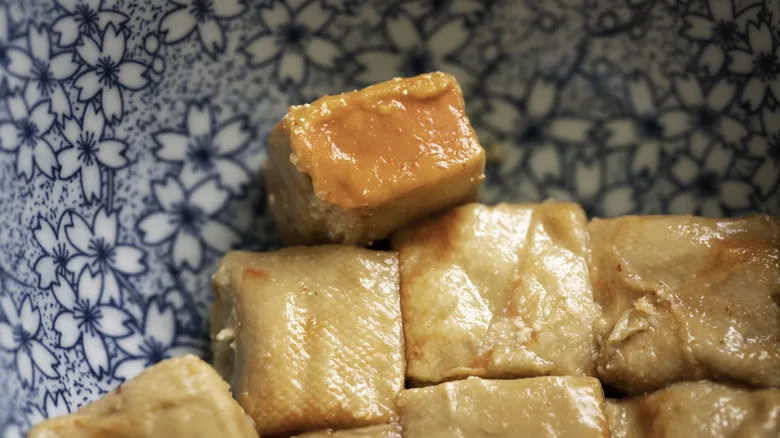
If you're in the mood for a culinary adventure and want to explore a unique alternative to blue cheese, consider trying furu. This fermented bean curd offers a strong, salty taste that closely resembles blue cheese. Essentially, it's tofu that has been seasoned and fermented with special ingredients like rice wine and spices, making it somewhat akin to blue cheese itself. When mashed, its creamy consistency can replicate the spreadable nature of soft blue cheeses.
The fermentation process imparts a rich flavor profile to furu, enhancing dressings, sauces, and marinades with added complexity. While it pairs beautifully with Asian-inspired dishes, it can easily be incorporated into a variety of cuisines. Personally, I enjoy crumbling a bit of furu over a wedge salad, where it complements the bacon and creamy dressing, adding a layer of nuanced flavor to the dish.
5. Cream cheese and capers
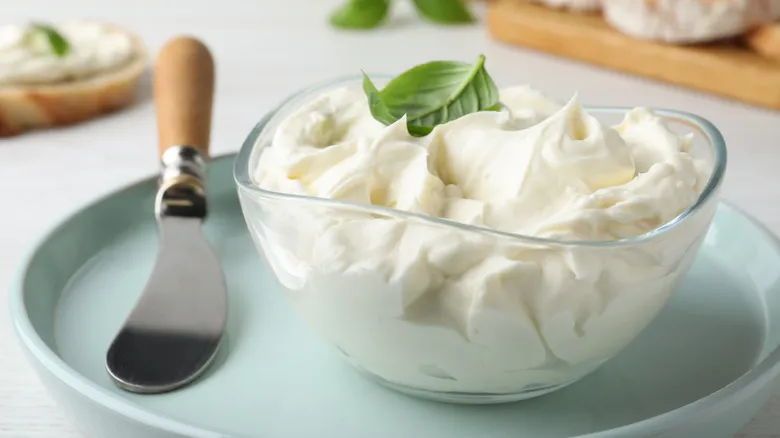
The blend of cream cheese and capers presents a smart alternative to blue cheese, delivering the creamy texture typical of blue cheese along with a salty, tangy burst from the capers. The cream cheese acts as a smooth, indulgent foundation, while the capers contribute a briny taste and intriguing texture that replicate the richness of blue cheese. This combination is highly adaptable in the kitchen, excelling as a spread for crackers or bagels, which you've likely enjoyed in various forms. It also shines in dips reminiscent of blue cheese for vegetables or chips, and as a topping for baked potatoes. It works wonderfully in fish burgers and dishes where blue cheese is typically used, adding an elegant flair to salmon rillettes or white fish salads. Notably, capers were Julia Child's secret ingredient for enhancing tuna salad, highlighting their capacity to enrich a range of dishes.
In pasta sauces, this pairing offers a creamy, flavorful element that can compete with blue cheese-based sauces. It is especially effective in cold pasta salads, providing a zesty kick that balances richer ingredients. For those eager to experiment, consider using this combination in stuffed mushrooms or as a filling for chicken breasts. The cream cheese-caper mix is also easily customizable; a hint of lemon zest can elevate the entire dish, while incorporating chopped fresh herbs like dill or chives adds layers of complexity and freshness.
6. Labneh
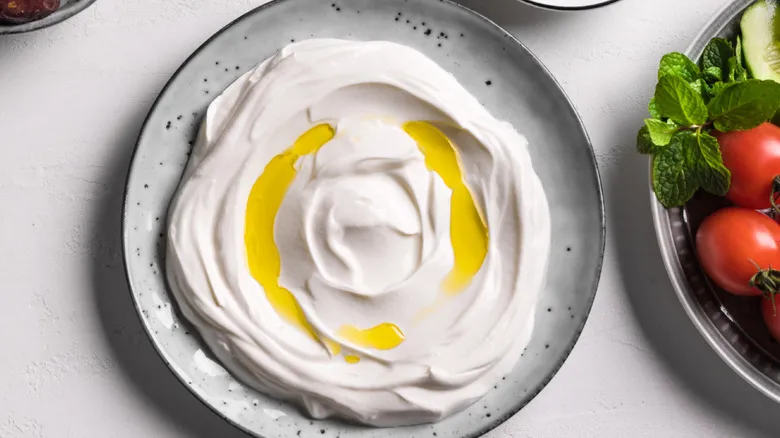
Labneh is a rich, creamy spread made by straining yogurt, resulting in a concentrated, tangy product that falls between yogurt and soft cheese in texture. It serves as an excellent alternative to blue cheese, versatile enough for a variety of dishes. The natural tang of labneh echoes the acidic flavors found in certain blue cheeses, while its creamy consistency provides a similar mouthfeel. Its thick texture makes it perfect for spreading on sandwiches or bagels, or as a dip for vegetables and pita chips. Although milder than blue cheese, labneh's flavor can be enhanced with herbs, spices, or a drizzle of high-quality olive oil.
Labneh particularly excels in Middle Eastern-inspired recipes, where it can stand in for blue cheese in salads, as a topping for roasted vegetables, or as a base for savory tarts. Surprisingly, it can also serve as a delightful substitute for blue cheese on steak, adding a creamy, tangy contrast to the rich meat. For those eager to experiment, consider using labneh instead of blue cheese in pasta sauces, as a pizza topping, or blended into mashed potatoes for a creamy side dish.
7. Truffle salt and pepper Boursin

Truffle salt and pepper Boursin presents a distinctive and opulent alternative to blue cheese, thanks to a special ingredient that's not commonly found. This blend offers a deep, earthy flavor from the truffle salt, enhanced by the creamy, herb-infused essence of Boursin cheese. The pepper introduces a zesty kick that echoes the signature sharpness of blue cheese. Together, this cheese provides a remarkable substitute that closely resembles the qualities of blue cheese.
This decadent soft cheese excels in a variety of culinary uses. As a spread, it elevates sandwiches and burgers to gourmet status. In pasta dishes, it transforms into a rich sauce with a smooth texture and layered flavors. As a topping for steak, it competes with traditional blue cheese butter. But the versatility doesn’t stop there. I enjoy rolling it into balls and immersing it in olive oil with crushed red peppercorns, creating a stunning addition to salads, stuffed mushrooms, and sophisticated appetizers. Its umami-rich earthiness, combined with the creamy Boursin and piquant pepper, produces a complex flavor profile that can effectively replace blue cheese in numerous recipes. While it may not be an everyday ingredient, this combination adds a unique and luxurious flair to many dishes.
8. Miso paste
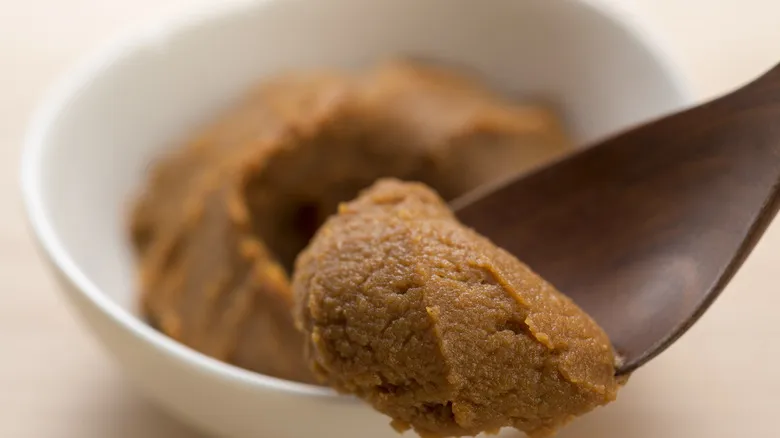
Delving deeper into the world of unique vegan alternatives to blue cheese, miso paste emerges as a strong contender. Although it doesn't replicate the creamy texture of blue cheese, miso delivers a savory, umami-rich flavor that closely resembles its depth and complexity. The fermentation process of miso adds a richness that is often missing from creamier cheese substitutes.
Despite its different texture, miso's adaptability shines in a variety of culinary uses. It can be blended into dressings, sauces, and marinades where blue cheese would typically provide a burst of flavor. A miso-based salad dressing can offer similar tangy and salty notes as a blue cheese dressing, while a miso marinade can infuse grilled vegetables or tofu with rich, intricate flavors. Surprisingly, miso can enhance unexpected dishes, adding depth to tuna casserole or giving a savory twist to mashed potatoes. In soups and stews, just a small amount of miso can elevate the dish in the same way a sprinkle of blue cheese would. Although its texture is different, miso's robust flavor and fermented characteristics make it an excellent option for mimicking the impact of blue cheese in dairy-free cooking.
9. Umeboshi paste
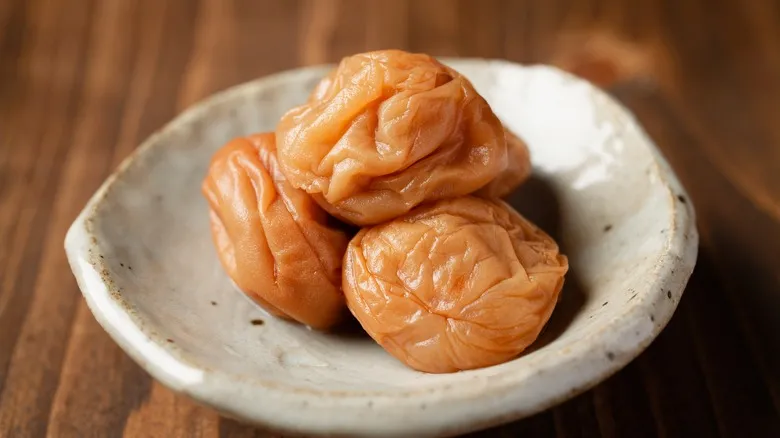
Umeboshi paste is a unique Asian ingredient known for its distinctive fermented taste, delivering a bold salty-sour flavor that can serve as a substitute for blue cheese in certain recipes. The term "umeboshi" refers to pickled plums in Japanese, which are both salted and dried to achieve their compact form. Despite its small size, this ingredient packs a powerful punch; a little goes a long way, enhancing the richness of dressings and sauces. For a close approximation of blue cheese, try mixing a small amount with goat cheese.
Although its flavor differs from that of blue cheese, umeboshi paste can impart a similar depth and complexity to various dishes, particularly those with an Asian influence. I enjoy incorporating it into quiches or potato gratins, where its unexpected funkiness surprises diners. Pairing it with fruits like figs or blueberries can help balance its strong flavor.
10. Anchovies
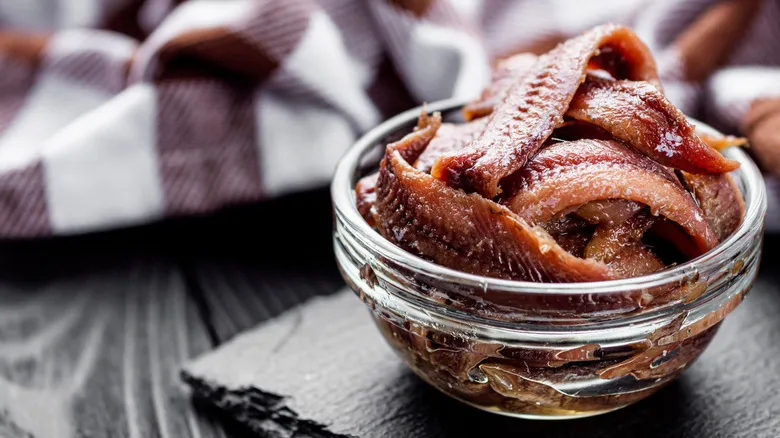
Ultimately, our least favorite yet still valuable alternative to blue cheese is anchovies — which should not be mistaken for sardines. Anchovies deliver a salty, umami-packed flavor that can evoke the boldness of blue cheese, though they lack its creaminess. When finely chopped or mashed, anchovies can even mimic the texture of crumbled cheese.
They are excellent in salad dressings, pasta dishes, and as toppings for pizzas or bruschetta. Additionally, they can enhance the depth of French onion soup, replicating the savory kick that blue cheese offers. Their robust flavor can introduce complexity to a range of dishes, from Caesar salad to puttanesca sauce.
However, anchovies can be quite off-putting for some due to their strong fishy taste and smell, making them a tricky substitute for those unaccustomed to their flavor. Furthermore, they are not suitable for vegetarians or vegans, which limits their appeal as a universal alternative to blue cheese. Use them thoughtfully, as they can add significant complexity in small amounts. So, apply them sparingly and with care.
How to use blue cheese and its replacements

Blue cheese offers a wide range of uses, and its substitutes can also enhance various recipes. Crumbled feta or capers can add a zesty kick to salads, while melting truffle Boursin or goat cheese into sauces can elevate pasta or vegetable dishes. Creamed anchovies and finely chopped or blended umeboshi are excellent additions to creamy dressings, especially for hearty greens like kale or endive. For a quick appetizer, spread labneh topped with finely diced olives on crackers or crusty bread, or use cream cheese with a hint of furu to stuff chicken breasts or pork chops for a delicious main dish.
These cheeses, along with alternatives like miso paste, can elevate simple meals such as baked potatoes or steamed vegetables. Olives and goat cheese work wonderfully in quiches, frittatas, and omelets, adding richness to egg-based dishes. For a gourmet touch, top burgers or steaks with labneh or goat cheese mixed with pepper. Incorporating feta into a stuffed burger recipe can really enhance the flavor!
Feel free to experiment with different combinations that mimic the sharpness and crumbly texture of blue cheese. Start with small amounts and adjust based on the flavor intensity you desire. Some substitutes may be milder, so you might need to use more to achieve the desired taste. The journey to discovering your favorite blue cheese alternatives begins with a spirit of experimentation, and your adventure into the world of bold flavors starts now.
Methodology
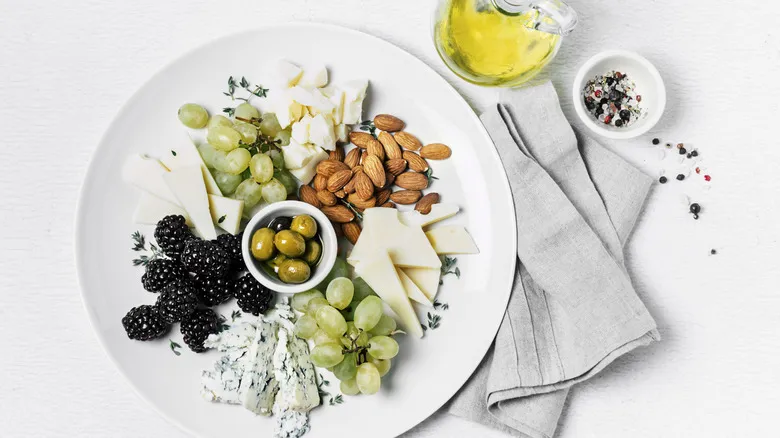
Throughout my 11-year journey as a professional recipe developer, I have gathered a wealth of techniques and alternatives for mimicking blue cheese flavors in vegan dishes. However, I realized that not everyone who avoids blue cheese shuns all types of cheese, prompting me to delve into research to broaden my options to include non-vegan alternatives as well. In preparation for this article, I thoroughly reviewed various cookbooks, with a particular focus on the Flavor Bible, and conducted extensive online research to gather additional insights.
The potential blue cheese substitutes were then evaluated by four taste testers, comprising both blue cheese lovers and those who are not fond of it. Each substitute was rated on a scale of 1 to 10 across three essential criteria: flavor, texture, and overall resemblance to blue cheese. This process allowed the panel to draw meaningful conclusions about the best blue cheese alternatives available, ranking them from most to least preferred.
Recommended
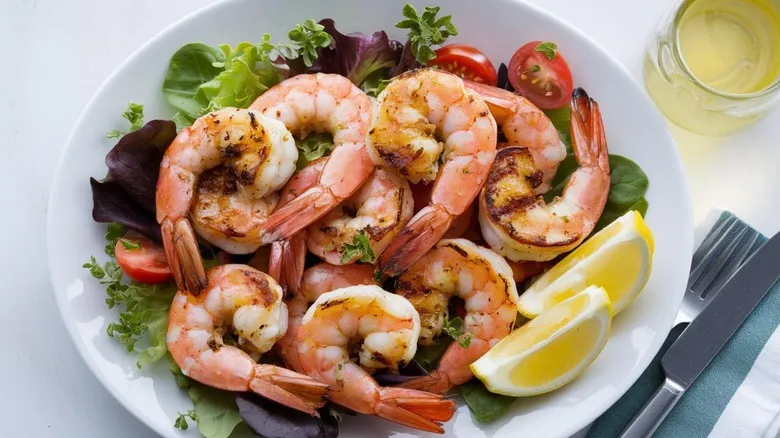
Why Adding Baking Soda To Shrimp Is A Game Changer

How To Sweeten Plain Greek Yogurt With Pantry Staples You Already Have

Gordon Ramsay's Clever Method For Thin And Crispy English Pancakes
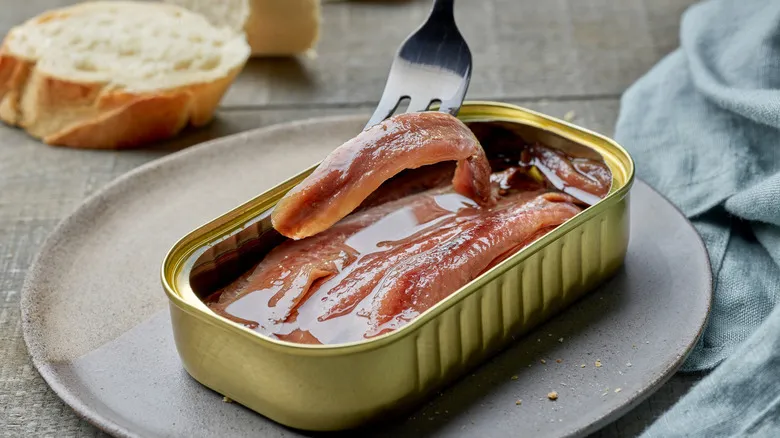
5 Ways You Can Use The Leftover Oil From Canned Anchovies
Next up

